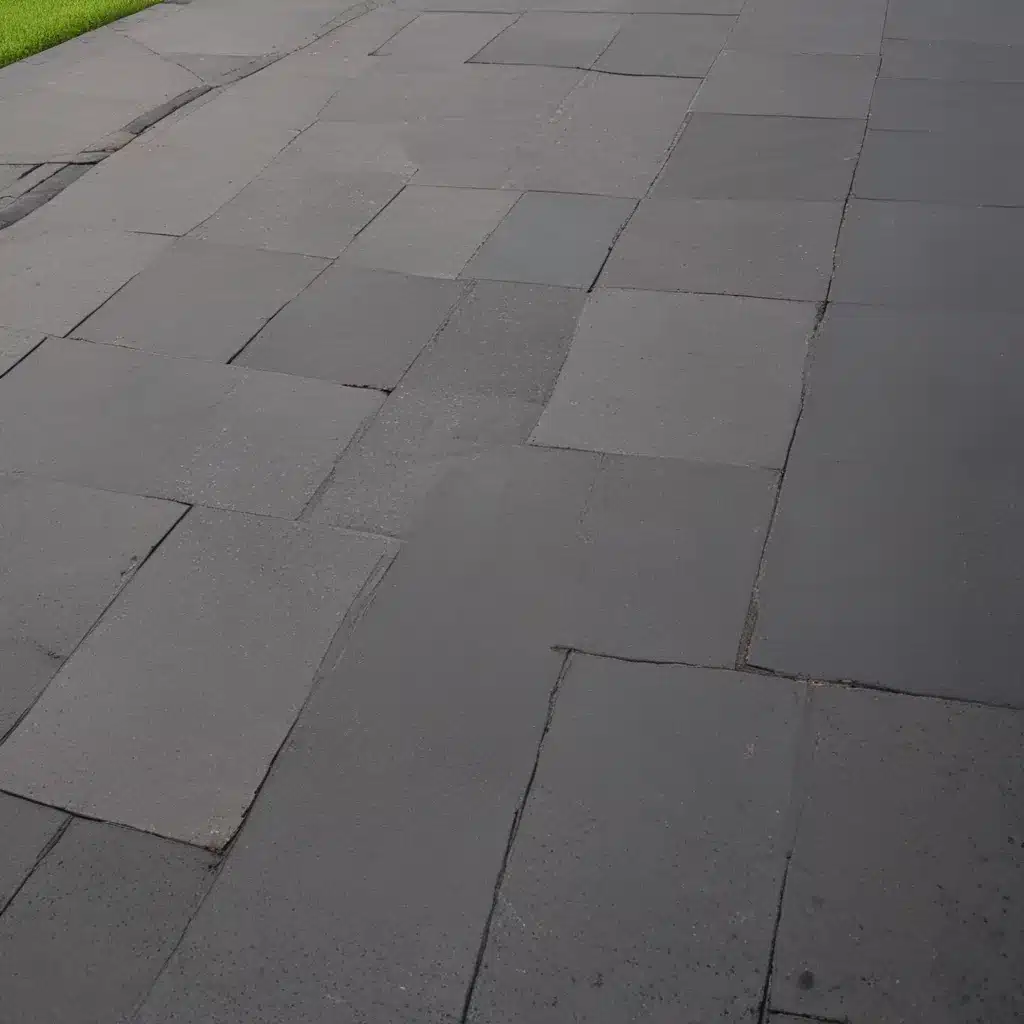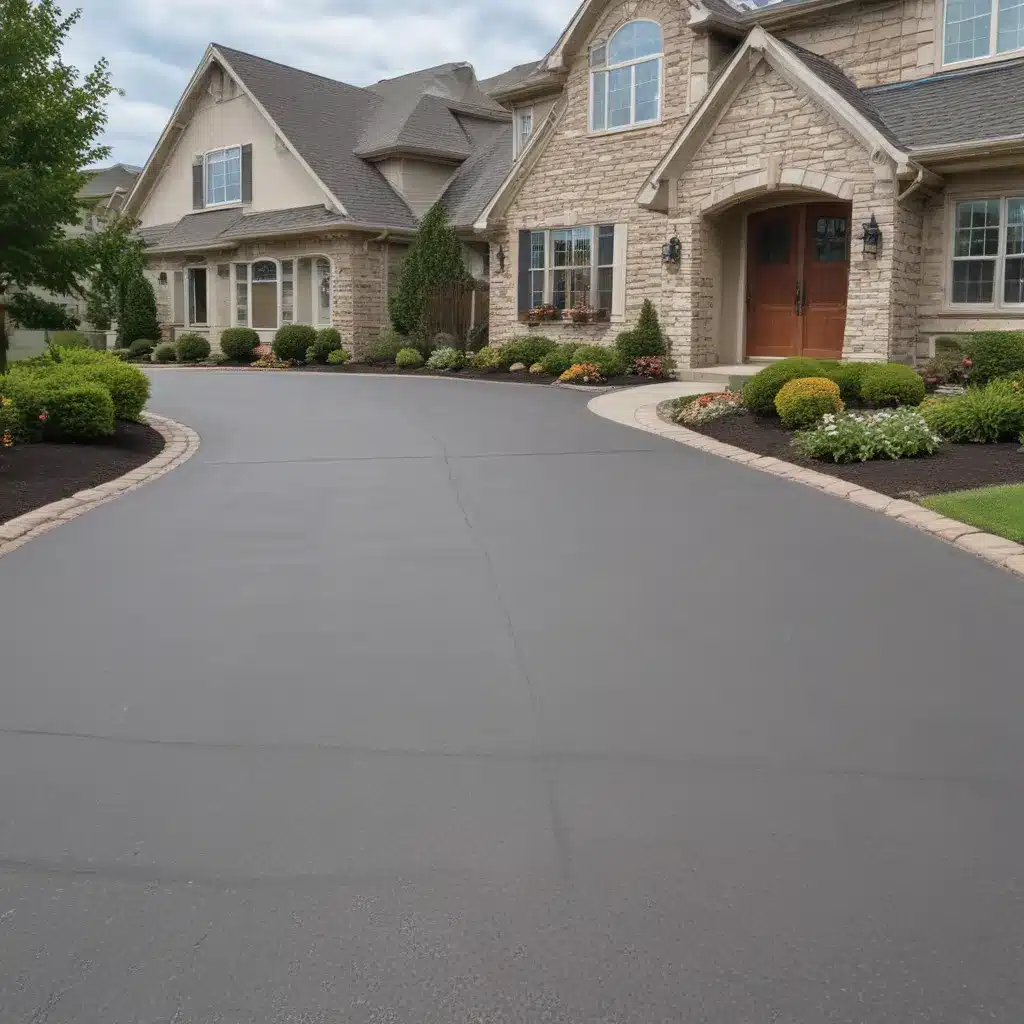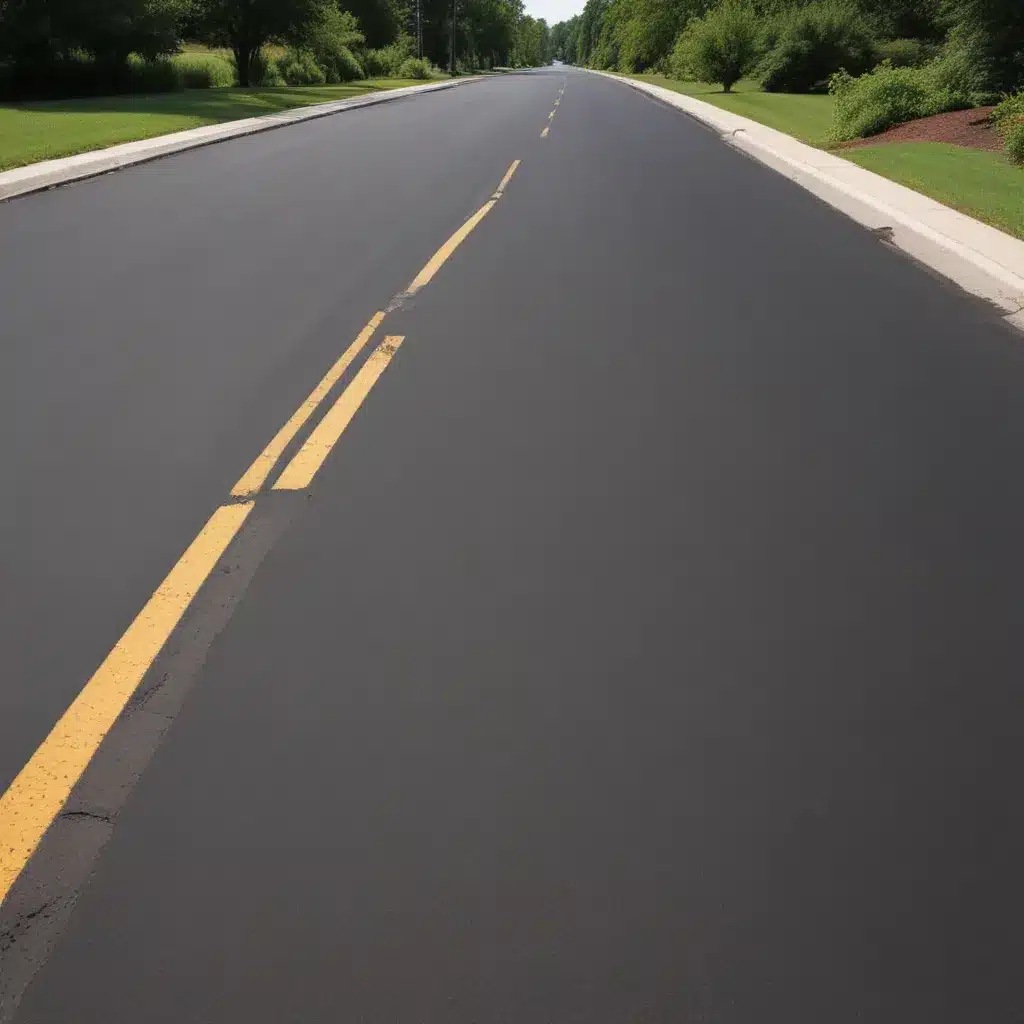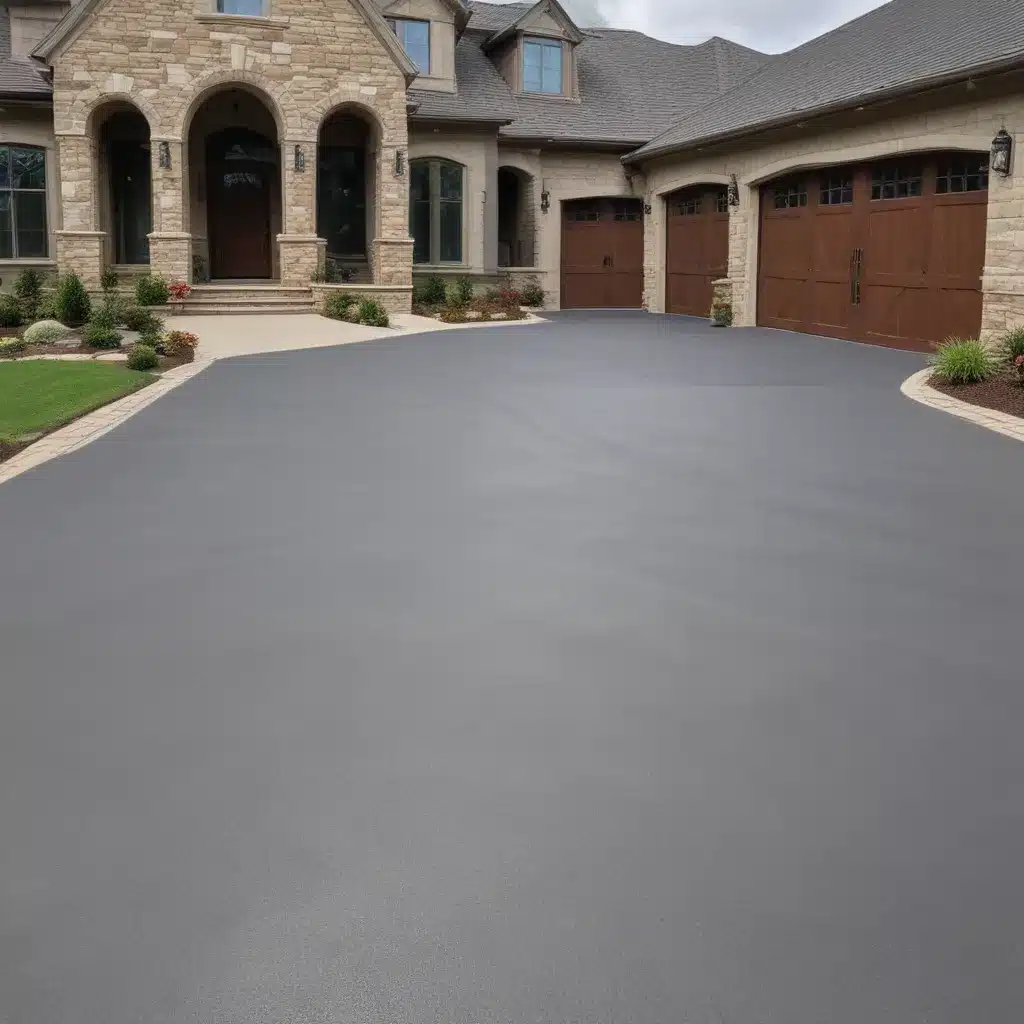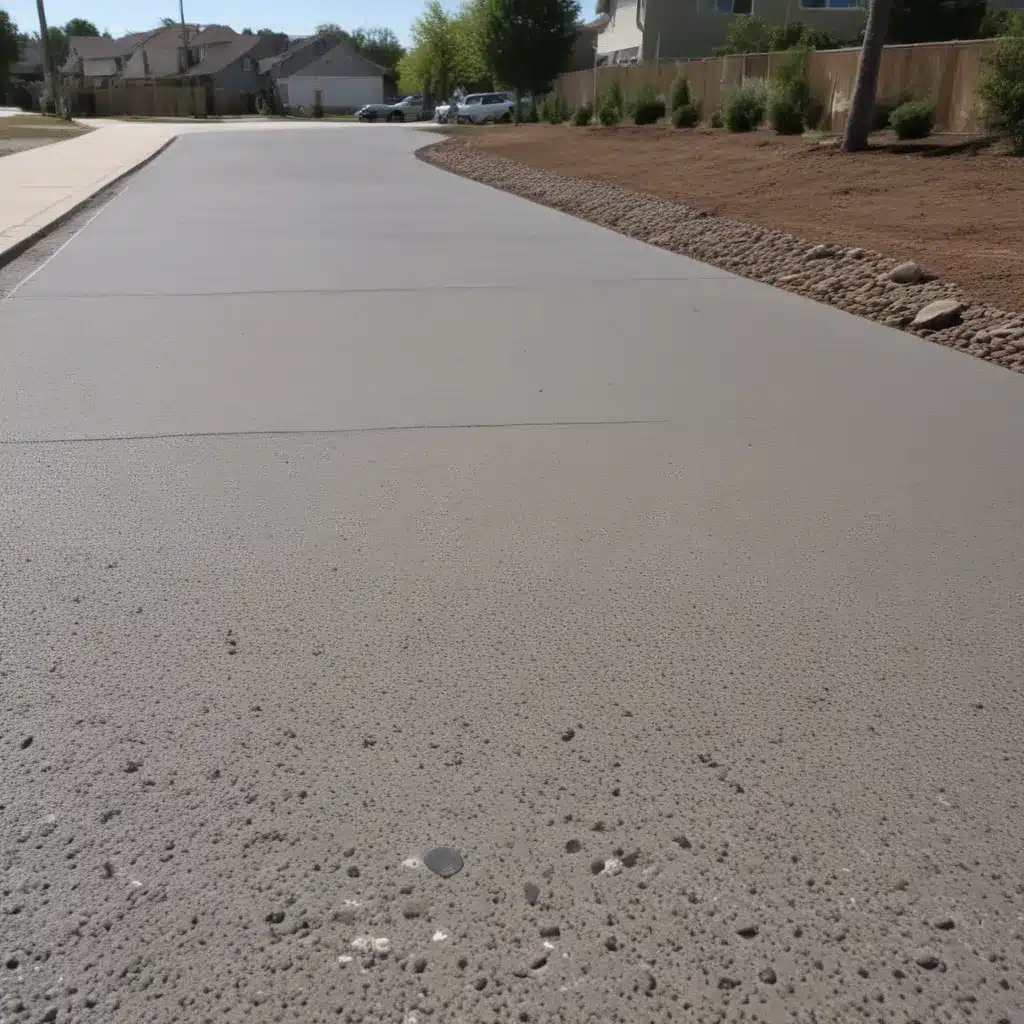The Concrete Conundrum: Embracing a Greener Driveway Solution
Have you ever found yourself staring at your driveway, wondering if there’s a more eco-friendly alternative to the ubiquitous concrete slabs? Well, my friend, I’m here to tell you that the solution to your paving predicament might just lie in the unassuming world of rubber driveways.
As someone who’s passionate about all things home improvement, I’ve been intrigued by this innovative paving option for some time. And let me tell you, the more I’ve delved into the world of rubber driveways, the more convinced I am that they’re the way of the future. Think about it – instead of contributing to the endless cycle of concrete production (which, let’s be honest, isn’t exactly the greenest of processes), you could be embracing a sustainable solution that’s gentle on the environment and easy on the eyes.
But what exactly are rubber driveways, you ask? Well, let me break it down for you. Essentially, these driveways are created by combining recycled rubber, typically sourced from old tires, with a binding agent. The result is a durable, porous surface that not only looks great but also offers a host of practical benefits.
The Eco-Friendly Advantage of Rubber Driveways
One of the primary reasons why rubber driveways are gaining popularity is their eco-friendly credentials. Concrete production is a major contributor to global greenhouse gas emissions, with the manufacturing process alone accounting for a staggering 8% of worldwide CO2 output.
In contrast, rubber driveways offer a much more sustainable solution. By repurposing old tires, they help to reduce the amount of waste that ends up in landfills and oceans, ultimately contributing to a more circular economy. And let’s not forget the fact that the production process for rubber driveways is far less energy-intensive than that of concrete, further reducing their environmental impact.
But the eco-friendly perks of rubber driveways don’t stop there. These innovative surfaces are also highly permeable, which means they allow water to seep through rather than running off and potentially contributing to flooding or storm drainage issues. This, in turn, helps to recharge groundwater supplies and reduces the strain on local water management systems.
Durability and Low Maintenance: The Practical Benefits of Rubber Driveways
Now, I know what you might be thinking – “Sure, rubber driveways sound great for the environment, but how do they hold up in the real world?” Well, let me put your mind at ease. These bad boys are built to last, with a lifespan that can easily exceed 20 years with proper care and maintenance.
One of the key advantages of rubber driveways is their incredible durability. Unlike concrete, which can crack and crumble over time, rubber surfaces are incredibly resilient and able to withstand the wear and tear of heavy vehicles, extreme weather conditions, and even the occasional mishap (hello, that time I accidentally backed over the garbage can – oops!).
And let’s talk about maintenance, shall we? Concrete driveways can be a real pain, requiring regular sealing, patching, and even full-on replacement every few years. But with a rubber driveway, the upkeep is a breeze. A simple sweep or occasional power wash is usually all it takes to keep your driveway looking as good as new.
The Aesthetics of Rubber Driveways: Elevating Your Outdoor Space
But let’s not forget about the visual appeal of rubber driveways. While concrete might be the traditional choice, these eco-friendly surfaces offer a unique and visually striking alternative that can truly elevate the look and feel of your outdoor space.
One of the best things about rubber driveways is the wide range of colors and patterns available. Whether you’re going for a sleek, monochromatic look or a more vibrant, eye-catching design, there’s sure to be an option that perfectly complements your home’s aesthetic.
And let’s not forget about the textural element. Unlike the smooth, uniform appearance of concrete, rubber driveways have a slightly textured surface that adds depth and visual interest. Plus, the subtle give underfoot can be a welcome respite for your joints, especially if you’re someone who spends a lot of time outdoors.
Real-World Inspiration: Rubber Driveway Case Studies
But don’t just take my word for it – let’s take a look at some real-world examples of rubber driveways in action. Take the case of the Smith family, for instance. After years of dealing with cracks and potholes in their concrete driveway, they decided to make the switch to a rubber surface.
“We were really impressed with the durability and low maintenance of the rubber driveway,” says Mrs. Smith. “And the fact that it’s eco-friendly was just the icing on the cake. Our driveway has never looked better, and we don’t have to worry about it falling apart anytime soon.”
Another success story comes from the Wilson household, where the family opted for a vibrant, multicolored rubber driveway to complement their modern, minimalist home design.
“We wanted something that would really make our outdoor space pop, and the rubber driveway was the perfect solution,” says Mr. Wilson. “The installation was a breeze, and we absolutely love the way it looks. It’s like having a work of art right in our own backyard.”
Debunking the Myths: Common Misconceptions about Rubber Driveways
Of course, with any new and innovative technology, there are bound to be a few misconceptions floating around. And when it comes to rubber driveways, the myths are no exception.
One common concern is that rubber driveways are slippery, but this simply isn’t the case. The textured surface actually provides excellent traction, making them a safe and reliable choice even in wet or icy conditions.
Another myth is that rubber driveways are prone to fading or discoloration over time. While it’s true that they may require the occasional touch-up, the color-fast properties of the materials used in their construction ensure that they’ll maintain their vibrant hues for years to come.
And let’s not forget the misconception that rubber driveways are more expensive than their concrete counterparts. Sure, the initial installation cost may be slightly higher, but the long-term savings in terms of maintenance and repair make them a financially savvy choice in the long run.
The Future of Driveway Design: Embracing Sustainable Solutions
As we look towards the future, it’s clear that the demand for eco-friendly, sustainable solutions is only going to continue to grow. And when it comes to driveway design, rubber driveways are poised to play a starring role.
Not only do they offer a greener alternative to traditional concrete, but they also provide a range of practical benefits that make them an increasingly attractive option for homeowners and contractors alike. From their impressive durability to their low-maintenance requirements, rubber driveways are truly the complete package.
So, if you’re in the market for a new driveway and you’re looking to make a more environmentally conscious choice, I’d highly recommend giving rubber a closer look. Who knows – it just might be the solution to your paving predicament that you’ve been searching for all along.
And if you’re in the Warrington area and in need of a driveway services company that specializes in rubber driveways, be sure to check out Driveways Warrington. They’ve got a team of experts who can help you design and install the perfect rubber driveway for your home.

